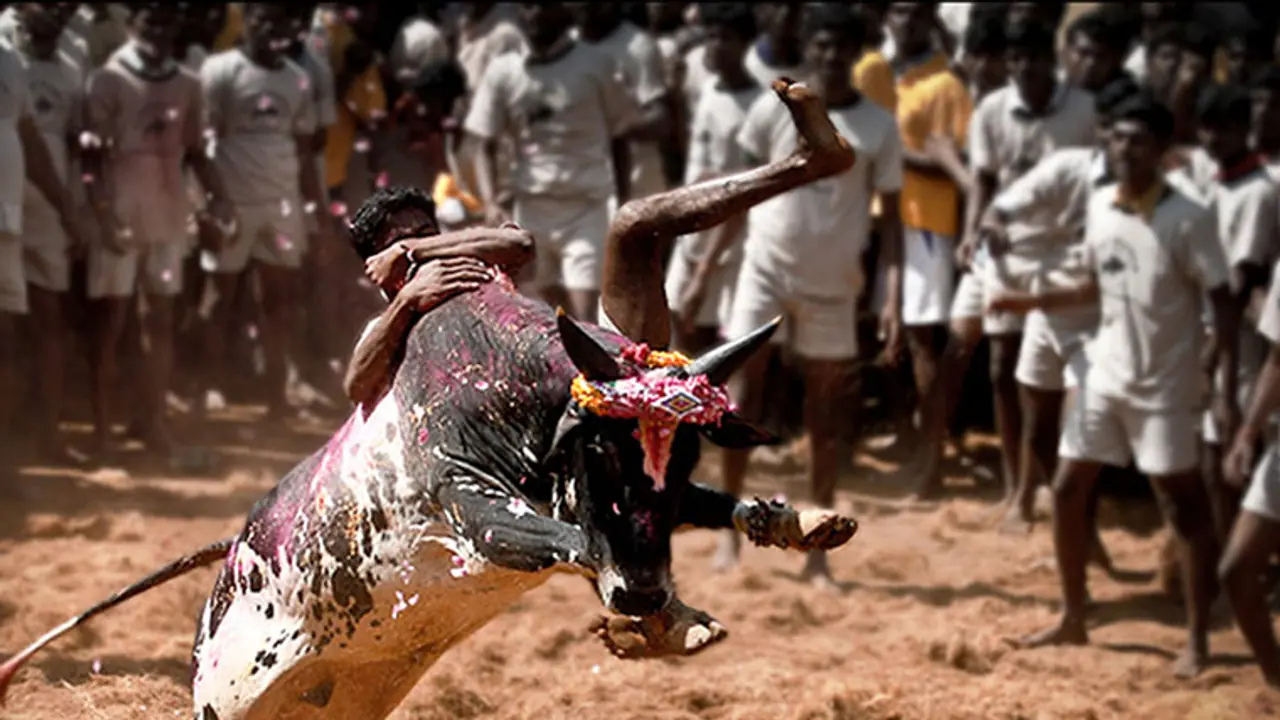Jallikattu a traditional sport sustains a small livelhood in Tamil Nadu A calf can be bought for a small amount, and can yield a high return during Jallikattu The rural poor also makes the accessories for these bulls, as well as maintain them

Is this just a cruel traditional sport, or is it a genuine source livelihood in rural Southern India? Unlike the famous Spanish bulls, the art and business of Jallikattu have been around for centuries.
In this traditional sport, coins are tied in a small piece of cloth and tied to the horns of the bull while the contestant attempts to get it by holding on to the bull’s hump to slow it down, much like slamming the breaks when driving or riding.
In fact, there is also a seal of this during the Indus Valley Civilisation that depicts its practice.
Of bulls and economy:
For a farmer, bulls are a source of economy. Right from purchasing a bull to maintaining it, and eventually showcasing it during the Jallikattu event, a farmer can make a sizeable amount (around ₹ 3 – 5 lakhs) reports the Economic Times. Besides this, the accessories that adorn the bulls' horns, also serves as a source of livelihood for the rural poor. In addition, the wealthy farmers employ them for the upkeep of the bull, thus giving them a source of livelihood.
Commercial Sport:
Jallikattu is held during the festival of Pongal. It is a four-day long harvest festival. On the third day of the festival, these bulls are brought out amidst much fan fare. According to the Economic Times, the Jallikattu event can range anywhere from ₹50,000 - ₹20 lakhs.
Breeding and Bans:
Only a specific kind of bull is used for breeding viz the Kangayam breed. The population of this specific breed has dropped from a million to a mere 15,000 reports the BBC. “In Tamil Nadu we used to have six native breeds. One breed called Alambadi has been officially declared extinct," says bull fighting supporter Balakumaran Somu. "This ban is going to kill other breeds as well."
The milk factor:
With urban development in the agriculture sector through mechanisation, the need for a owning a bull was slowly shelved. Also, there was a need for higher-yielding milk which domestic and native breeds could not compete against. Economic Times reports, “Supporters of native breeds argue that foreign breeds might not be a better option in the long run. Native breeds require less expensive maintenance and are less vulnerable to diseases and viruses. Jersey cows also require more grazing pastures. In the long run, native breeds are a better economic option. And Jallikattu is one big way people keep on rearing native cattle.”
“In the future, the low-yield milk of native cows can generate a huge demand as increasingly people perceive it to be more nutritious. If native breeds are preserved, as Jallikattu does, it can lead to a new phenomenon in the dairy sector in future. People may be willing to pay more for the milk of a native cow which can offset the loss due to low yield.”
